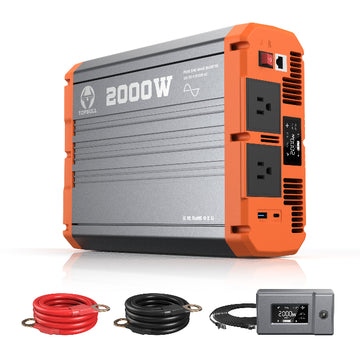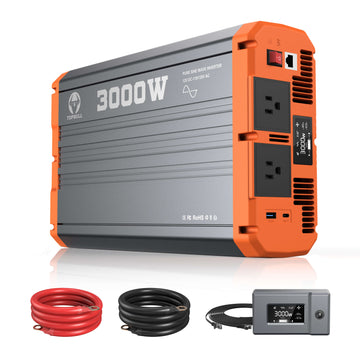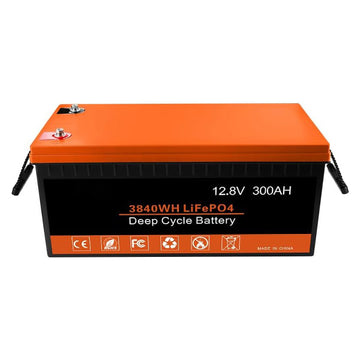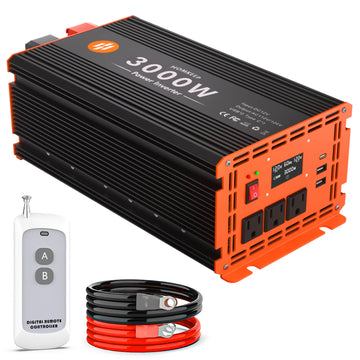You may come across some unfamiliar solar industry jargon if this is your first solar installation. We've put together a glossary of solar terms and definitions, so whether you're thinking about installing solar panels and need more information, or just want to know what a particular solar term means, our glossary has the answer.
Solar system
Cell A photovoltaic cells convert sunlight into electricity and are usually made of semiconductor materials such as silicon. Multiple solar cells can be electrically connected to form a module.
Module Solar module, also known as a solar panel, is a sealed set of PV cells, usually housed in a frame.
Panel These can include one or more modules, wired together as a single unit, encapsulated in a frame with a protective glass cover.
Array A group of interconnected solar panels or modules arranged in rows and columns that work together to generate electricity from sunlight.
Inverter A device for converting direct current generated by a solar panel into alternating current
Collector refers to a device or system that absorbs solar radiation and converts it into heat or electricity.
Shingle A type of solar panel designed to resemble and integrate with conventional roof shingles.
Storage battery also known as a solar battery or energy storage system, is a device that stores electricity generated by solar panels for later use. For example in the evening when panels may not be generating.
Tracker A mechanical system that adjusts the angle of a solar module or panel throughout the day to maximize the energy gained from the sun's rays.
AC isolator A handy 'off' switch for your solar system that disconnects the AC side of the solar inverter from the grid or other AC sources. It is an important safety component for safely performing maintenance on the inverter or connected equipment.
Solar calculator The device can help you estimate the size and cost of a solar system based on your energy use needs and lifestyle, ensuring you have the right system for your home.
Solar monitor monitors solar power and home electricity use in real-time, providing automatic fault and diagnostic alerts when problems occur. Being able to quickly identify and correct problems can improve system performance and save money.
Bypass diode is located in the junction box and connected in parallel with the solar cells in the solar panel. A poorly performing solar panel can be bypassed to reduce power loss due to partial cell failure. This is a common integrated component in solar panels.
Junction Box An enclosure located on the back of a solar panel where electrical connections from the solar cells are consolidated and protected. Each junction box includes a bypass diode that wires the PV panel connectors together and keeps the power flow going in one direction.
Panel mismatch occurs when lower-performing panels pull down the performance of neighboring panels in the same string. The causes of panel mismatch vary and include manufacturing tolerance, panels aging at different rates, shading, soiling, bird droppings, snow, and fallen leaves blocking the sunlight. Panel mismatch affects overall system performance and efficiency.
Racking refers to the mounting structure that supports and holds the solar panels in place.
Solar materials
Monocrystalline A kind of photovoltaic cell made from a slice of single-crystal silicon, where the entire cell is oriented in one direction.
Polycrystalline A photovoltaic material made up of silicon offcuts, creating tiny individual crystals that are oriented in various directions.
Amorphous A thin-film photovoltaic cell made from non-crystalline silicon that has a more glassy structure.
Power
Electrical grid A network of transmission lines that deliver electricity from suppliers to consumers.
Off grid A type of solar PV system that operates independently of the traditional electrical grid, utilizing renewable energy sources like solar panels and batteries for power generation and storage.
Grid-tied solar systems are connected to the utility grid. These systems generate electricity from sunlight using solar panels and feed any excess electricity back into the grid, without access to utility-generated electricity.
String A number of photovoltaic modules or panels interconnected electrically in series to produce the operating voltage required by the load.
Alternating Current (AC) An electric current that periodically reverses direction, the flow of electric charge periodically changes direction, typically following a sine wave pattern. AC is the form of electricity most commonly used in domestic, commercial, and industrial applications.
Direct current (DC) is an electrical current that flows continuously in one direction without reversing its polarity. The solar panel generates DC power, which is stored in a battery for backup. It needs to be converted to alternating current by an inverter before it can be used in the home.
AC coupling A method used in solar energy systems to connect additional energy sources such as battery storage or backup generators to an existing solar photovoltaic (PV) system that is already connected to the grid.
DC/AC ratio also known as the solar array oversizing ratio, is a measure used in solar photovoltaic (PV) systems to compare the DC (direct current) power generated by the solar panels to the AC (alternating current) power output of the inverter.
Ampere (A) The unit of electrical current which refers to the rate of flow of electricity.
Ampere-hour (Ah) The unit of electric charge is commonly used to measure the capacity of a battery to store electrical energy. It represents the amount of charge that flows through a circuit when one ampere of current is applied for one hour.
For example, a battery with a capacity of 1 Ah can theoretically supply 1 ampere for 1 hour or 0.5 ampere for 2 hours before being completely discharged.
Kilowatt (kW) The unit of power used to measure the capacity or output of solar photovoltaic (PV) systems, equivalent to 1,000 watts. It indicates the rate at which the solar panels can generate electricity under certain conditions.
kilowatt-hours A unit of energy commonly used in the context of electricity consumption and billing, as well as for quantifying the energy production of solar panels and other energy devices. Kilowatt-hour represents the energy equivalent to one kilowatt of power consumed or generated over one hour.
Peak demand refers to the maximum amount of electricity consumed within a specific period, typically measured in a day, month, or year. It represents the highest level of power usage on the grid.
Alternative Energy also known as renewable energy or clean energy, refers to energy sources that are environmentally friendly and have a reduced impact on the environment compared to traditional fossil fuels.
Incentives and Abbreviations
Solar Lease contract with a solar company to have a solar energy system installed on your roof. With a solar lease, you agree to pay the company a fixed monthly fee to “rent” the system in exchange.
DSIRE database of state incentives for renewables and efficiency, which allows you to find policies and incentives in each state
REC (Renewable Energy Certificate) is a tradable certificate that represents the environmental attributes of electricity generated from renewable energy sources.
ITC (Investment Tax Credit) is a financial incentive in the United States that encourages investment in renewable energy projects. Solar ITC offers all homeowners a tax credit equal to 30% of solar and/or battery storage expenses, with no maximum limit on the amount of the credit.
PBI (Performance-Based Incentive) is an incentive based on the amount of energy generated by a solar system. The compensation is based on the amount of energy (in kWh) generated by the solar system in a given period.
SEP (The State Energy Program) provides grants to states and directs funding to state energy offices from technology programs in DOE’s Office of Energy Efficiency and Renewable Energy. States use grants to address their energy priorities and program funding to adopt emerging renewable energy and energy efficiency technologies.
SEPA is a non-profit organization focused on facilitating the transition to a clean and modern energy system through collaboration, research, and education.
EPC in the context of solar energy projects refers to a comprehensive contracting model that covers the design, procurement, and construction phases of a solar power plant.
AHJ (Authority Having Jurisdiction) is an organization, agency, or individual responsible for enforcing codes, standards, and regulations related to building construction, fire prevention, and life safety.






